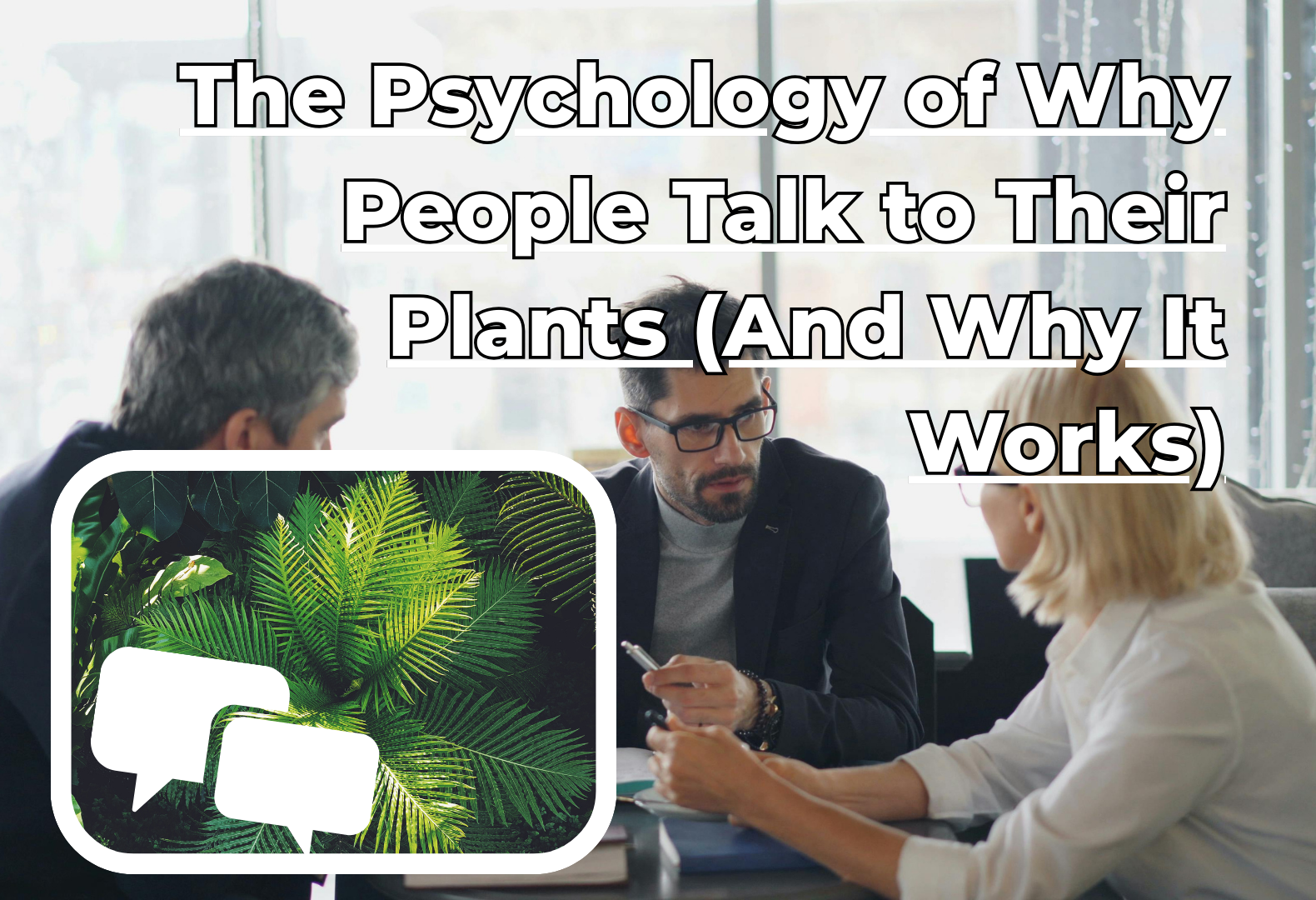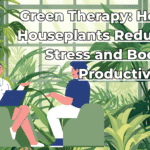The Psychology of Why People Talk to Their Plants (And Why It Works)
Plants don’t speak, yet millions of people around the world still talk to them. They whisper to a Peace Lily before leaving for work, hum to their Snake Plant while watering, or even confess frustrations to a resilient cactus in the corner of the room. According to surveys, nearly half of plant owners admit they talk to their greenery—and many swear it helps plants thrive. But why do humans do this, and does it actually work? Let’s explore the psychology behind this phenomenon, the science that may support it, and the very real benefits for both people and plants.
🌱 Why People Talk to Their Plants: Psychological Drivers
- Anthropomorphism: Giving Plants Human Qualities
Humans have a natural tendency to anthropomorphize—assigning human traits to non-human entities. Talking to a plant is like talking to a pet, stuffed animal, or even a car. By treating plants as companions, people strengthen emotional bonds and feel less alone. It transforms a decorative object into a relational partner. - Stress Release and Emotional Outlet
Talking is a form of expression. When directed at a plant, it becomes a safe, judgment-free practice. Unlike friends or coworkers, plants don’t interrupt, criticize, or gossip. That makes them perfect “silent therapists.” Research with students has shown that speaking to plants can reduce stress and increase relaxation levels, much like journaling or meditation. - Mindfulness and Attention Training
Speaking to a plant draws focus onto it. You notice details—drooping leaves, dry soil, new shoots—that might otherwise go unnoticed. This mindful attention leads to better care and strengthens the feeling of being present in the moment, which psychologists know reduces anxiety and improves mood. - Sense of Responsibility
Once you talk to your plant, it’s no longer just décor; it’s something you feel accountable for. That added sense of responsibility translates into more consistent watering, pruning, and light management. This isn’t just psychology—the improved care directly supports plant health.
🔬 Does Talking to Plants Actually Help Them?
The short answer: possibly, but not in the way most people imagine.
- Sound Vibrations: Plants respond to vibrations from wind, insects, and environmental noise. Human speech is also vibration, typically 85–255 Hz. Experiments by the Royal Horticultural Society found tomato plants grew taller when exposed to recorded voices—especially female voices. While not conclusive, this suggests plants might respond positively to certain frequencies.
- Gene Activation: Some studies show plants exposed to sound waves activate genes linked to growth and stress resistance. Just as wind encourages stronger stems, low-level sound might stimulate growth pathways.
- Indirect Care Effect: More significant than vibration is the indirect impact: people who talk to plants tend to observe and care for them more attentively. This results in healthier soil conditions, better pruning, and quicker responses to signs of disease or dryness.
- Placebo Effect for the Caregiver: Even if the plant isn’t directly “hearing” your words, the act changes the human. Calmer, more attentive caregivers = better plant outcomes.
📊 What the Research Says
- Penn State University: Researchers concluded that while there’s no definitive proof that talking alone boosts growth, sound vibrations may influence plant physiology in subtle ways.
- Royal Horticultural Society (UK): Female voices produced measurable growth differences in tomato plants during a controlled month-long experiment.
- Trees.com Survey: Nearly 50% of respondents talk to their plants. Two-thirds of them believe it boosts growth, and over 60% reported personal emotional benefits.
- Psychological Studies: Simply spending 15 minutes speaking to a plant reduced stress levels in participants, demonstrating clear human mental health benefits.
🧠 Why It Works for Humans: The Deeper Psychology
- Projection of Care: By verbalizing affection, encouragement, or frustration, people externalize feelings in a constructive way. It’s similar to writing in a diary, but with a living “listener.”
- Non-Judgmental Presence: Unlike therapy with another person, talking to a plant carries no risk of conflict or shame. This safe outlet encourages emotional honesty.
- Social Substitution: In urban environments, where loneliness is common, plants fill social gaps. They become companions and confidants.
- Mind-Body Connection: Speaking softly and engaging with greenery lowers heart rate and cortisol levels, creating a physiological relaxation response.
🌿 Practical Ways to Talk to Your Plants (Piranha Hacks)
- Consistency Over Content: Your plant doesn’t care what you say—it responds to the consistency of your care. Establish a “talking ritual” during watering or pruning.
- Tone Matters: Soft, calm voices create gentler vibrations. Shouting or blasting loud music may stress the plant.
- Pair With Touch: Lightly brushing leaves while speaking mimics natural wind stimulation, encouraging stronger growth.
- Observation Language: Narrate what you see: “You’ve got new leaves coming in,” or “Your soil looks a little dry today.” This builds mindfulness for you and care accuracy for the plant.
- Integrate Music: Studies show plants exposed to gentle classical or ambient music sometimes show increased growth. Experiment with background sound.
⚖️ The Balance Between Myth and Science
It’s important to stay realistic. A single conversation won’t magically turn a struggling fern into a jungle. Scientific consensus agrees: to match mechanical air filters or fertilizers, you’d need dozens of plants and constant sound exposure.
But here’s the key truth: talking to your plants works because it changes you. It makes you a more mindful, attentive caregiver. It strengthens your bond with living things, lowers your stress, and improves your environment. And healthier, better-cared-for plants do grow better.
🌟 Final Thoughts
The psychology of talking to plants reveals more about humans than about greenery. We crave connection, even with non-human companions. We project empathy, responsibility, and care onto our plants—and in return, they reward us with growth, beauty, and a calmer space.
Does it “work”? Yes. Maybe not because the plant understands your words, but because the act transforms your relationship with it—and with yourself.
So go ahead: whisper encouragement to your fiddle leaf fig, hum to your cactus, or vent to your pothos. Whether or not the plant hears you, your mind and body certainly will. 🌿🧠✨









